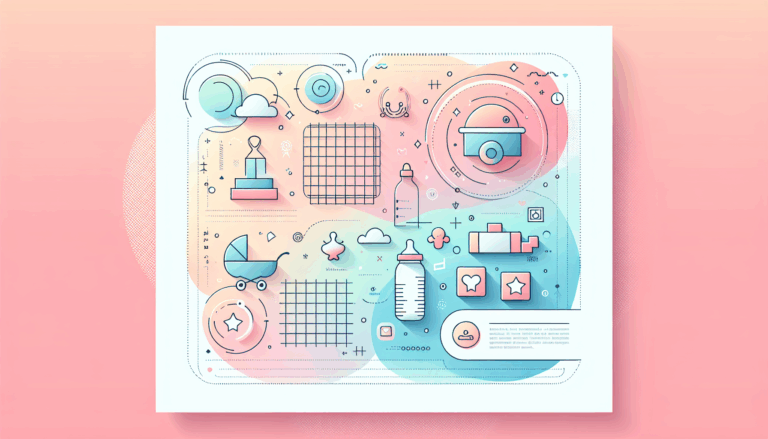Leveraging WordPress Gutenberg with Figma Designs
Unlocking the Power of WordPress Gutenberg with Figma Designs
In the ever-evolving landscape of web design, the integration of powerful tools like Figma and WordPress Gutenberg has revolutionized the way designers and developers bring their visions to life. This synergy not only streamlines the design-to-development process but also enhances the overall user experience. Let’s delve into how you can leverage WordPress Gutenberg with Figma designs to create visually stunning and highly functional websites.
Understanding Figma and Gutenberg
What is Figma?
Figma is a cloud-based design and prototyping tool that has become a staple in the UI design community. Its strengths lie in collaboration, web-based access, design systems, prototyping, and plugins. Figma is particularly useful for designing and prototyping WordPress themes, plugins, and entire websites. Its component-based approach aligns perfectly with the block philosophy of Gutenberg, making it an ideal tool for creating mockups, wireframes, and interactive prototypes.
What is Gutenberg?
Gutenberg is the block editor introduced in WordPress 5.0, which has transformed content creation with its modular, block-based approach. Gutenberg supports custom blocks, aligning with modern web development practices. This editor empowers users to create content with blocks, making it easier to edit and update websites directly within WordPress.
Benefits of Integrating Figma with Gutenberg
Streamlined Workflow
The integration of Figma and Gutenberg offers a seamless workflow that bridges the gap between design and development. By leveraging Figma’s capabilities to create detailed designs and Gutenberg’s powerful block editor, teams can efficiently create and iterate on block-based designs. This synergy ensures that the final product is both visually appealing and functionally robust.
Enhanced Collaboration
One of the key benefits of using Figma is its collaborative features. Designers and developers can work together in real-time, ensuring that the design vision is accurately translated into functional reality. This collaboration is crucial for maintaining design fidelity and ensuring that the final product meets the desired standards.
Customization and Flexibility
Both Figma and Gutenberg offer extensive customization options. Figma allows designers to create detailed designs with reusable components, while Gutenberg enables developers to tailor these designs into functional blocks. This flexibility empowers teams to create unique and personalized experiences that align with their specific needs and workflows.
Converting Figma Designs to Gutenberg Blocks
Step-by-Step Guide
Converting Figma designs into Gutenberg blocks involves several steps:
- Organize Your Design: Ensure your Figma design is organized into sections and layers are named correctly. Consistency in styles such as colors, fonts, and spacing is crucial.
- Export Assets: Export all necessary assets like images and icons for use in WordPress.
- Use Conversion Tools: Utilize plugins like WPLandings or Yotako to convert Figma designs directly into WordPress Gutenberg blocks. These plugins simplify the process by automatically extracting text and images and converting them into native WordPress blocks.
- Customize and Refine: Use Gutenberg’s block editor to customize the converted pages/posts. Adjust layouts, text formatting, and image settings to meet your exact needs.
Tools and Plugins
Several tools and plugins can facilitate the conversion process:
- WPLandings: This plugin allows you to connect your Figma account and convert designs into WordPress Gutenberg blocks with just one click. It offers features like automated image handling, auto-responsive designs, and integration with major marketing tools.
- Yotako Plugins: Yotako offers plugins that enable designers to convert their Figma or Adobe XD designs into fully functional WordPress websites and themes. These plugins provide powerful editing capabilities within Gutenberg, allowing for easy content updates and customization.
Real-World Examples and Case Studies
Successful Implementations
Case studies from leading web development agencies highlight the success of integrating Figma designs with Gutenberg blocks. For instance, a digital agency specializing in custom Gutenberg blocks for high-profile clients broke down Figma designs into basic components like text, images, and buttons. They then used custom HTML, CSS, and JavaScript to craft each element, ensuring the block was both visually faithful to the original design and easy to edit for end-users.
Best Practices
To ensure a successful conversion, follow these best practices:
- Responsive Design: Design your Figma file with responsive breakpoints in mind. Use responsive blocks in Gutenberg and test your design on different screen sizes to ensure it looks good on all devices.
- Collaboration: Maintain close collaboration between designers and developers to ensure that the design vision is accurately translated into functional reality.
- Testing and Iteration: Test your Gutenberg blocks thoroughly and iterate over the design to ensure it meets the desired standards and performs optimally.
Common Challenges and Solutions
Design Fidelity and Complex Layouts
One of the common challenges is maintaining design fidelity and handling complex layouts. To solve these issues:
- Use Exact Measurements and Styles: Ensure that the measurements and styles from Figma are accurately replicated in Gutenberg. Use custom CSS for complex layouts if necessary.
- Test on Different Devices: Test your design on various devices and screen sizes to ensure it looks good and functions as intended.
Conclusion and Next Steps
The integration of Figma and Gutenberg represents a significant advancement in web design and development. By leveraging the strengths of both tools, you can create visually stunning and highly functional websites that resonate with your audience.
Get Started Today
Ready to transform your Figma designs into interactive Gutenberg blocks? Here’s how you can get started:
- Visit Figma2WP Service: Explore the Figma2WP Service to learn more about how you can seamlessly convert your Figma designs into WordPress Gutenberg blocks.
- Contact Us: If you need assistance or have questions, feel free to Contact Us for personalized support.
- Choose the Right Tools: Select plugins like WPLandings or Yotako to simplify the conversion process and ensure a smooth transition from design to development.
By following these steps and best practices, you can unlock new levels of productivity, creativity, and user engagement, ultimately delivering superior digital experiences that stand out in the competitive online landscape.
Incorporating tools like Figma and Gutenberg into your workflow can significantly enhance your web design and development process. Whether you’re a seasoned developer or a curious beginner, the synergy between these tools offers unparalleled flexibility and customization options, making it easier than ever to bring your design visions to life.
More From Our Blog
Building a Trusted Online Hub for Parents: The Role of Design In today’s digital landscape, parenting websites and child care blogs serve as invaluable resources for families seeking guidance, community support, and expert advice. Creating an engaging, trustworthy, and user-friendly platform is essential for these sites to thrive, and design tools like Figma2WP Service have Read more…
Unlocking the Power of Hands-On Web Design with Modern Tools In today’s digital age, the ability to craft your own website has transformed from a daunting technical challenge into an engaging creative process accessible to enthusiasts, DIYers, and professionals alike. Services like Figma2WP Service empower you to convert your design concepts into fully functional WordPress Read more…


